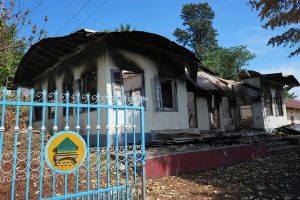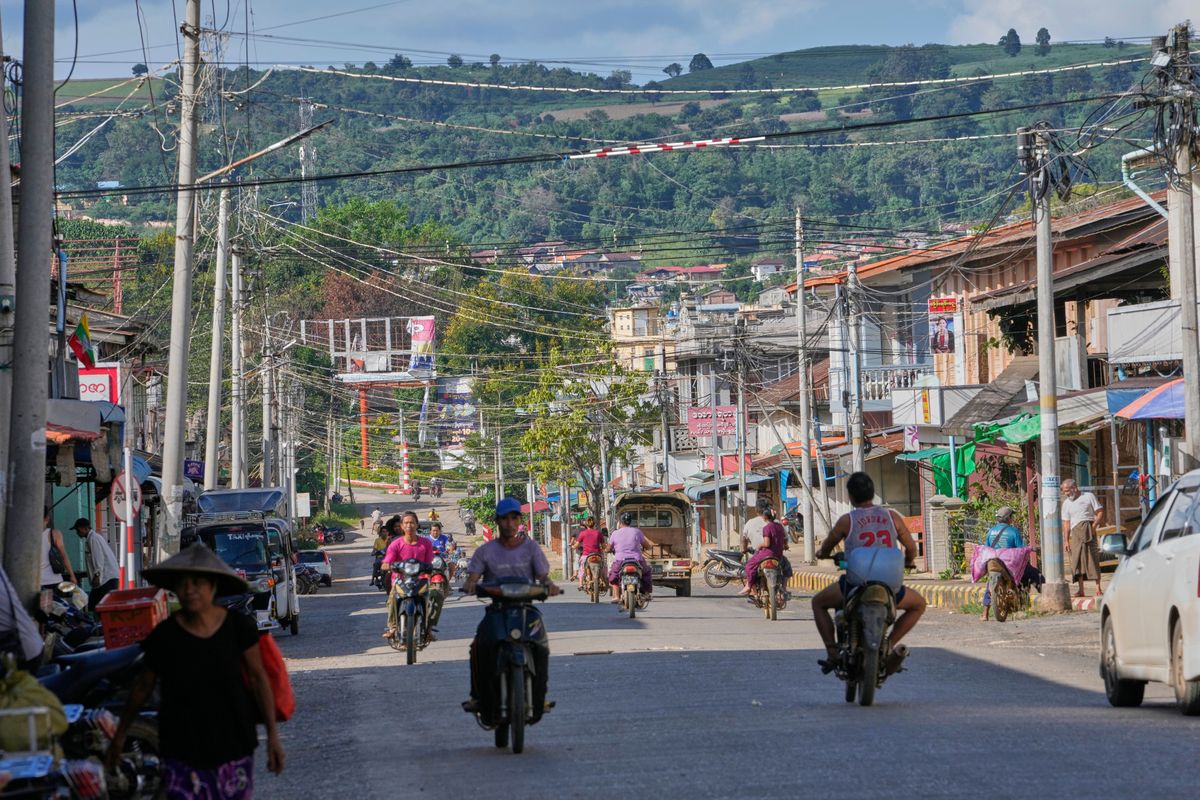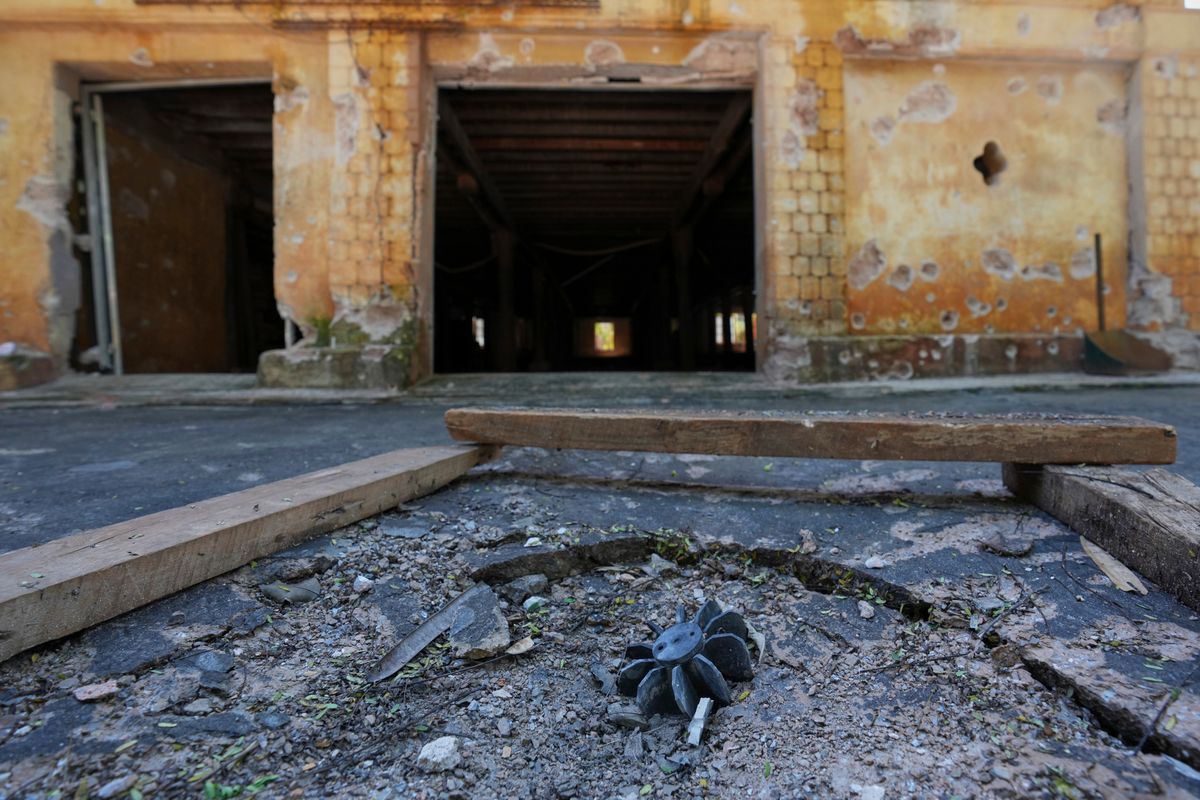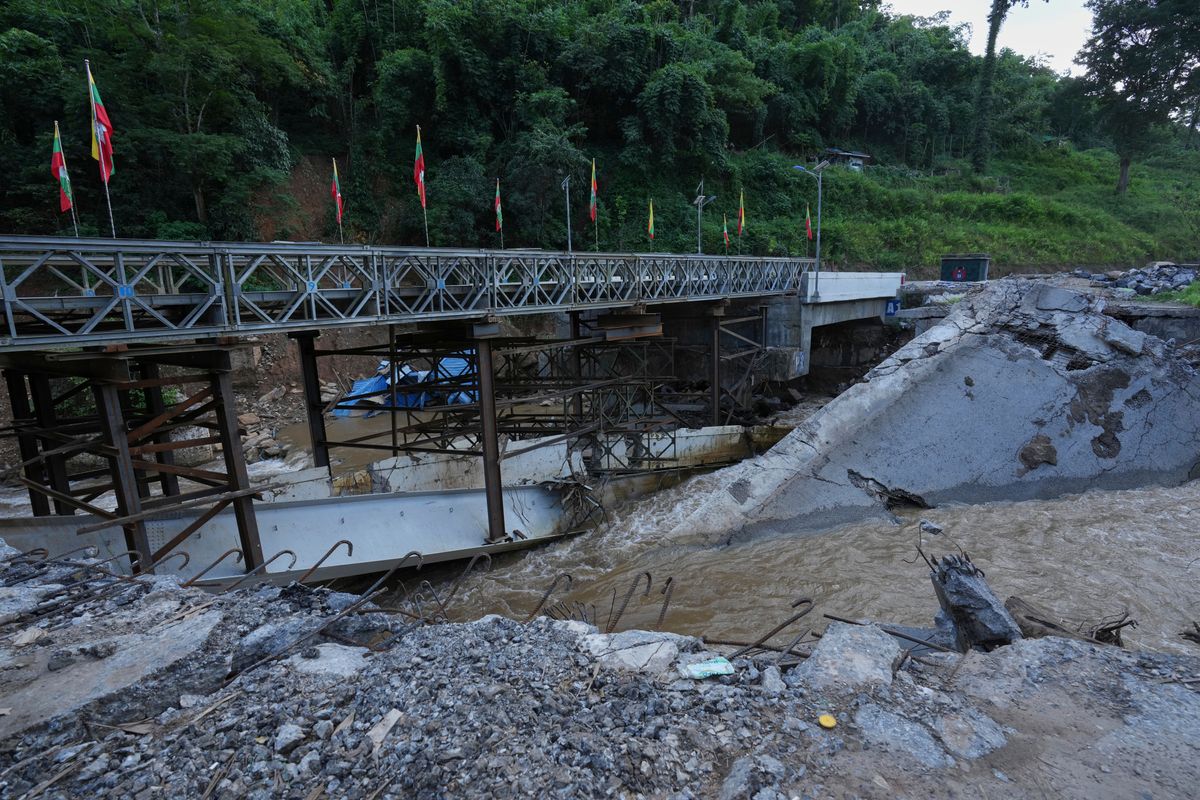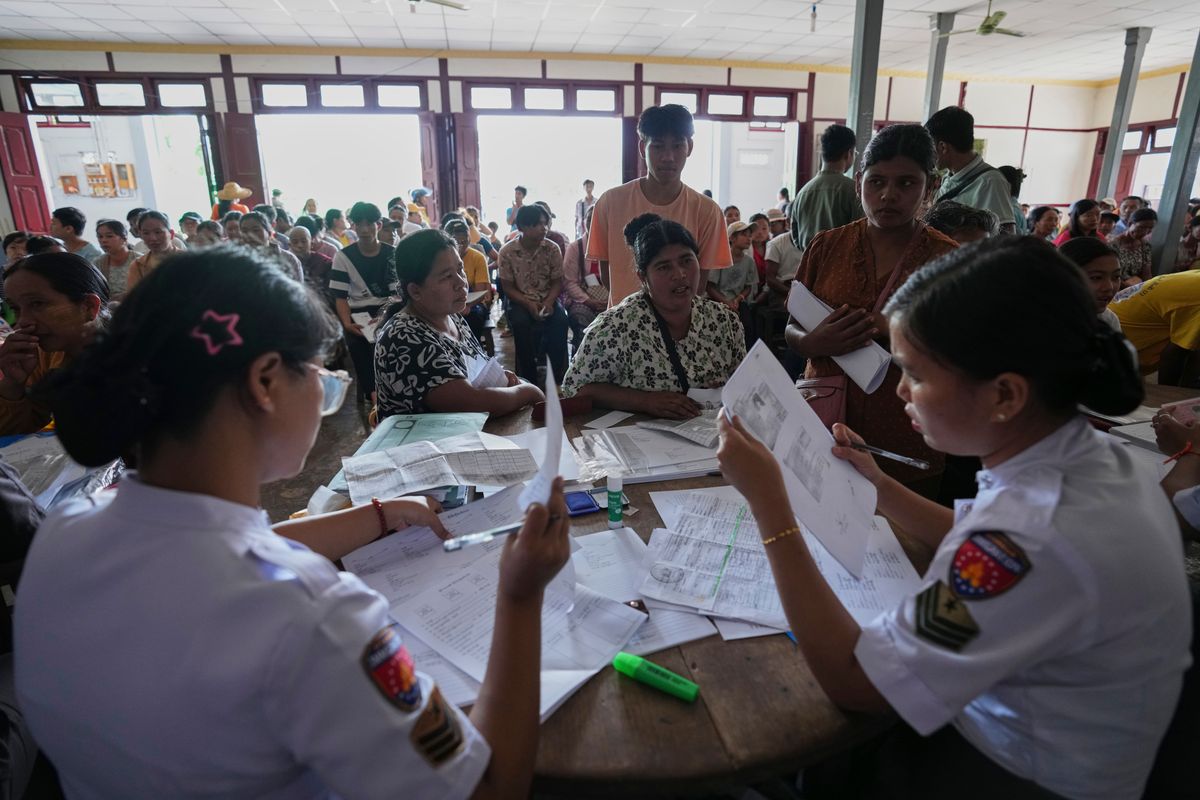KYAUKME, Myanmar (AP) — Ten days after it was recaptured by Myanmar’s military government, the town of Kyaukme stands eerily silent. Schools have reopened but the town’s once-busy market is mostly empty. Vendors at some stalls closed them at the sight of the visiting journalists, visibly nervous.
The once-thriving town in Myanmar’s Shan State is in shambles, an Associated Press journalist has confirmed on Friday in a rare visit to the war-torn area allowed by the country’s military government.
The local army allowed an AP photographer to join a trip supervised by pro-military Myanmar media, the only representative of foreign media who was permitted to do so. The military doesn’t allow a free press and bars journalists from entering conflict zones independently.
They saw the charred wreckage of official buildings, such as the courthouse, police station and government housing. Much of the area around the town’s hospital was destroyed, with its operations temporarily shifted to a nearby Chinese temple. At least one of the town’s fire engines was burnt out.
But civilian houses seemed to be mostly unscathed, except those near damaged official buildings, but most of the town’s original population of 46,000 had fled.
The ethnic militia that previously controlled the town accused the army of causing the damage with air strikes and heavy weapons, while the government soldiers who took over the town said the militia destroyed structures as it retreated.
Because of its strategic location on a highway connecting central Myanmar to China, Kyaukme has been much fought over. About 115 kilometers (70 miles) northeast of Mandalay, the country’s second-largest city, it has changed hands twice since the army in 2021 ousted the elected government of Aung San Suu Kyi, setting off the current civil war between the military government and an alliance of militias representing ethnic minorities and pro-democracy activists.
Kyaukme was captured by the Ta’ang National Liberation Army in August 2024, amid a wave of victories by opponents of military rule that left them apparently in control of most of the country’s territory. The TNLA is the guerrilla army of the Palaung ethnic minority.
The town fell back into the hands of the military government on Oct. 1 after a three-week battle, in a significant victory for government forces.
The army has mounted a succession of successful offensives in recent months, ahead of elections set for the end of the year. Critics say the polls will be neither free nor fair, but the army hopes that high turnout will help legitimize the vote.
Before attacking Kyaukme, the army in July recaptured the town of Nawnghkio, considered a gateway to Myanmar’s heartland because it sits at the crossroads of Myanmar’s eastern hills and its central flatlands.
From there 55 kilometers (33 miles) to Kyaukme, the road is flanked by buildings damaged by bombs and bullets, or pummeled into debris.
Army checkpoints manned by newly drafted soldiers stand every 500 to 1,000 meters (yards) along the route. A major bridge was damaged, but remains standing and is under repair.
The authorities blocked journalists’ access to some residential areas, which they said were dangerous.
“There are still land mines that haven’t been cleared in parts of the neighborhood,” said Capt. Wai Yan Kyaw, who was stationed at one of the town’s gates.
The journalists saw unexploded ordnance, including a mortar shell sunk into the ground inside the compound of a Buddhist monastery.
Locals who spoke to the AP said that only a small part of the town’s population had returned since its recapture.
A resident who had stayed behind during the fighting said that the overwhelming majority fled after fighting broke out last year, and those who stayed, like him, did so because they couldn’t afford to leave. He spoke on condition of anonymity to avoid harassment from the authorities.
Kyaukme is near the front line of the continuing army offensive, with soldiers saying they believe TNLA forces are in the hills just 32 kilometers (20 miles) away.
A motorbike taxi driver in his mid-30s, who also asked not to be named for his own security, said the town’s once-busy streets were now virtually deserted, and he believed residents would be unwilling to return until the army recaptured more nearby towns.
“People are unwilling to live near the front line,” said the driver, who came back on Tuesday.
By AUNG SHINE OO
Associated Press

